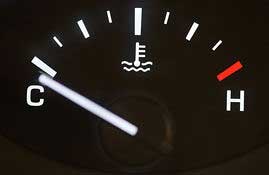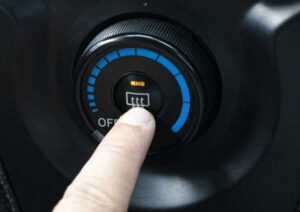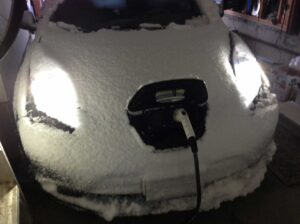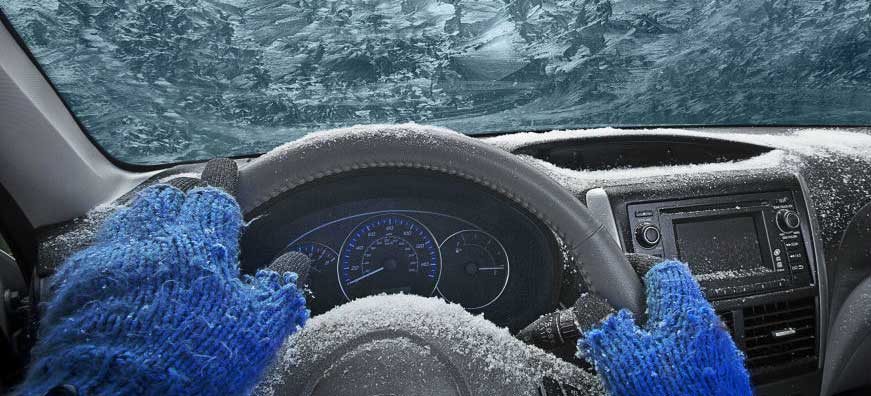It used to be different
Without question, just a few decades ago, warming up a car used to be necessary for two primary reasons related to the less sophisticated nature of both cars and motor oil. Most cars had carburetors instead of fuel injectors until roughly the mid-1990s, and carburetors were imprecise devices even at their best, especially upon startup when they choked the engine and ran fuel-rich until the engine warmed up.
Part of the problem is the intake manifold that routed the air-fuel mixture to the cylinders would allow liquid fuel to pool. The manifold, which back then was always metal, had to literally warm up until it became hot enough to vaporize fuel; until it did, the engine would run rich, rough, stall more easily and pollute like mad. Fuel injection, especially with time and improvement, solved this.
What’s changed with oil is that it’s better than it used to be, flows easier at colder temperatures, and is better matched to the engine in which it’s used. What hasn’t changed is that more wear happens when you crank the engine and for the few seconds after it starts, before the oil circulates and lubricates its various surfaces, than in the tens or even hundreds of miles of driving that follow. It’s just that today’s oil is better at shortening that oil-starved period.
However, there are means to give your engine a leg up.
So, how long?


The most important tip is not to accelerate too aggressively until the engine is fully warmed up. (This is also true in warm weather, though it takes longer when it’s cold.) We’re not saying you have to make a menace of yourself in traffic, but avoid flooring it immediately.
If your car has a temperature gauge, regular operating temperature will be when the needle is in the middle between the C and H (for cold and hot, naturally). Some cars now show a blue indicator to represent a cold engine; when that goes off, it’s warmed up. Note that engines warm up faster when driven than when left to sit, idling, meaning you will also warm up faster that way, because a conventional car cabin’s heat comes from the engine. That brings us to …
There are other reasons to preheat a car


But it also gives window defrosters a chance to work. Even in cars without a heated windshield wiper, which warms and softens wiper blades where they rest, a warm interior and warm windshield or rear window can ensure that the wipers conform to the glass and do their job better. A fully-warmed cabin can even melt accumulated snow from the windows, though this isn’t the environmentally conscious approach — it wastes fuel and releases carbon dioxide.
Remember: Driving a car (even if doing so moderately) warms the engine and the car’s occupants much faster than letting it idle.
Gasoline and diesel differences
If you think your gas-powered car takes a long time to warm up, you should try a diesel for perspective. Diesel engines are more efficient than gasoline engines, and if you consider that the engine’s job is to produce motive force, heat is a sign of inefficiency.
We’ve driven diesels in extreme cold (zero degrees) that have struggled to keep the cabin warm. Both for this reason and because they’re more difficult to turn over than gas engines in the best of conditions, diesel engines are more often fitted with electric block heaters that can be plugged in to keep the engine block and all associated lubricants warm before you even start the engine. Gasoline engines in the coldest climates can also benefit from electric engine block heaters.
You should preheat your electric car


Unlike gasoline and diesel vehicles, battery-electrics (and PHEVs operating in electric mode) rely on electricity for heat, and electric heat sucks a lot of power. It requires so much power, in fact, that we recommend equipping your home with 240-volt Level 2 charging if you can afford it, even if you purchase a PHEV that can charge fully overnight on 120 volts. In our experience, 120 volts isn’t enough to preheat a plug-in in winter (or precool one sitting in the summer sun, for that matter), leading to some diminishment of the battery charge by preconditioning before you depart. The upside is that Level 2 also charges a minimum of twice as fast as a 120-volt outlet.
The above is about maximizing EV motoring, which is the more affordable choice even with a hybrid that can revert to gas-electric operation, but many PHEV manufacturers also build thermal management into their battery packs, so leaving your car plugged in or preconditioning it, depending on the vehicle, also prepares the battery. A warmer battery also maximizes power and range in cold temperatures.

